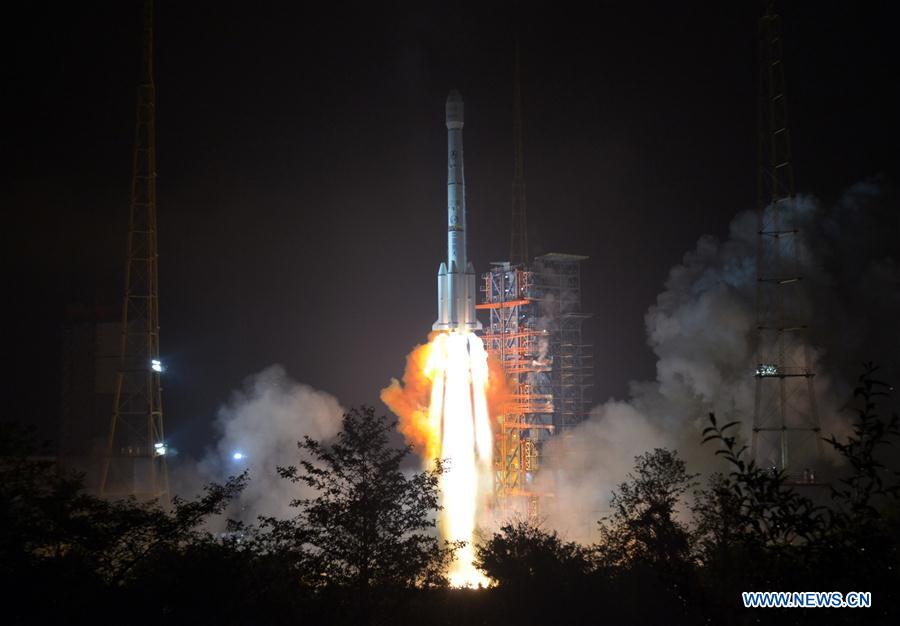
A communications satellite designed to deliver broadband services to rural China, airline passengers and maritime vessels suffered “abnormalities” after separating from its Long March 3B launcher Monday, Chinese state media confirmed Tuesday.
The Chinasat 18 communications satellite lifted off at 1203 GMT (8:03 a.m. EDT) Monday from the Xichang space center in southwestern China’s Sichuan province, according to the state-run Xinhua news agency.
Videos shared on Chinese social media showed a Long March 3B launcher climbing into the sky over Xichang, where liftoff occurred at 8:03 p.m. local time.
The Long March 3B rocket apparently worked as designed.
Xinhua said the Chinasat 18 satellite separated from the Long March 3B launcher normally, and U.S. military tracking data indicated the rocket deployed Chinasat 18 into a geostationary transfer orbit ranging more than 22,000 miles (nearly 36,000 kilometers) above Earth, suggesting a successful launch.
“China’s new communication satellite ChinaSat 18, sent into space on Monday, has experienced abnormalities, and space engineers are investigating the cause,” Xinhua reported.
The Chinasat 18 satellite was built by the China Academy of Space Technology, or CAST, a state-owned aerospace contractor. Chinasat 18 is the first spacecraft based on the enhanced DFH-4E satellite bus, a derivative of the DFH-4 platform used by more than 20 satellites since 2006.
Two communications satellites built on the DFH-4 platform suffered solar array failures in 2006 and 2008, prematurely ending ending their missions.
Designed for a 15-year lifetime, Chinasat 18 is owned by China Satcom, which provides civilian communications services across the country. Chinasat 18 carries a Ka-band high-throughout communications payload designed for broadband Internet services, and also hosts Ku-band transponders.
Viasat and China Satcom announced a partnership earlier this year to provide in-flight connectivity to airline passengers over China. According to a Viasat press release, Chinese passenger jets equipped with Viasat hardware will be able to connect with China Satcom’s Ka-band network, which is currently linked with the Chinasat 16 satellite and was set for an expansion with the launch of Chinasat 18.
The agreement will allow allow Viasat’s customers to roam onto China Satcom’s network in Chinese airspace, and permit China Satcom users roaming connectivity on Viasat’s global network.
“Our agreement with China Satcom is a significant step towards realizing a seamless global community of high performance IFC (in-flight connectivity),” said Don Buchman, vice president and general manager of commercial aviation at Viasat, a California-based company.
“China Satcom is now the only satellite operator and licensed service provider in China with the bandwidth resources to deliver the in-flight experience our airline customers have come to expect and depend on,” Buchman said in a statement. “Our partnership is a natural way to extend state-of-the-art services specific to China Satcom’s fleet and the China domestic market, and create a global roaming alliance for our existing and new domestic and international customers and the rapidly growing Chinese global commercial airline fleet.”
After separation from the Long March 3B launcher, Chinasat 18 was expected to maneuver into a circular geostationary orbit over the equator using its own propulsion system.
No further details on the status of Chinasat 18 were released Tuesday by Chinese state media, or by China Satcom.
Email the author.
Follow Stephen Clark on Twitter: @StephenClark1.



